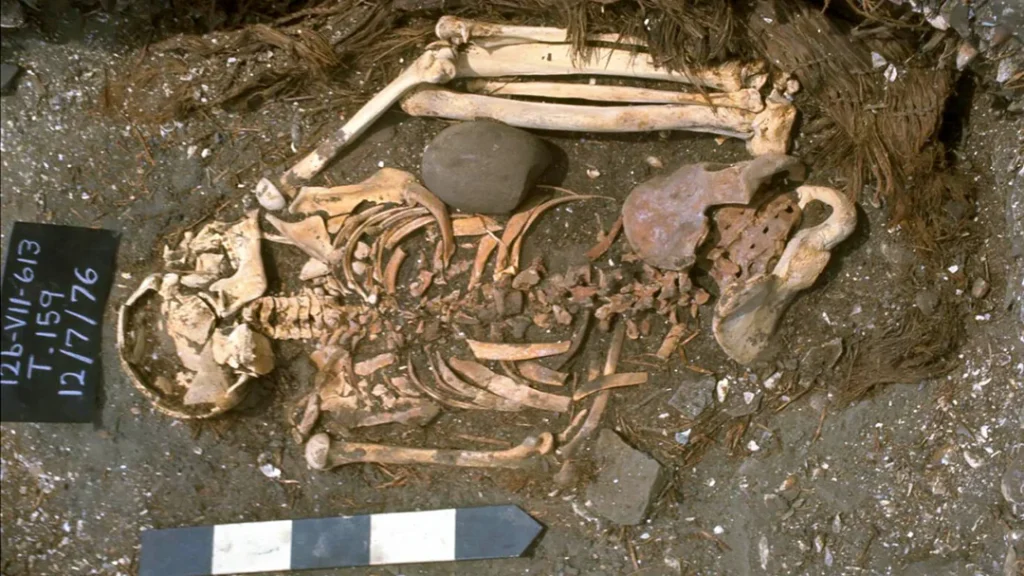Introduction to the Historic Discovery
One of the most intriguing recent archaeological finds in Peru has changed the way we view the relationship between humans and marine predators. A roughly 6,000-year-old skeleton of a teenage boy, about 17 years old at the time of death, was discovered at the Paloma archaeological site in southern Peru. What makes this discovery especially significant is that the remains show clear signs of a fatal shark attack — possibly the earliest known case of a human being killed by a shark.
The Remarkable Discovery
In 1976, an archaeological team led by Robert Benfer from the University of Missouri and Jeffrey Quilter from Harvard University excavated at the Paloma site. They uncovered the remains of a young man with unmistakable evidence of a shark attack: his left leg was completely missing, and his right hip and forearm exhibited deep bite marks consistent with shark attacks. These signs suggest that the young man’s death was caused by a predatory shark, likely while he was engaged in coastal fishing activities.

Comparison with Previous Discoveries
Before this discovery, the title of the oldest known shark attack victim was attributed to a 3,000-year-old skeleton found in Japan. This individual showed over 790 shark-related injuries, prompting researchers to reconsider the history of shark attacks on humans. However, the recent find in Peru has shifted this timeline, pushing the earliest known shark attack back another 3,000 years. This makes the Peruvian teen the earliest documented victim of a shark attack, significantly altering our understanding of human interaction with marine predators.
Historical and Social Significance
The discovery of this skeleton is not just remarkable because of its age, but also because of the burial practices associated with it. Archaeologists noted that the grave of the young man differed from others in the Paloma community, suggesting that his death may have had special significance. It’s possible that this tragic death was seen as noteworthy by the community, perhaps as a symbol of the dangers posed by the ocean or a significant event that held spiritual or cultural meaning.

A New Perspective on Human and Marine Life
This shark attack case highlights an important aspect of early human life, especially for coastal communities. These groups faced significant dangers from marine life, including sharks, while relying on the ocean for their sustenance. The marks left on the young man’s body show that sharks were a serious threat for those living near the coast, and these encounters likely shaped how early humans viewed their relationship with the sea.
Conclusion
The discovery of the Peruvian shark attack victim is not only a crucial archaeological find but also opens a new chapter in our understanding of human history and its interactions with the natural world. It demonstrates that marine predators like sharks have been a threat to humans for thousands of years, influencing the way early coastal societies viewed and interacted with the ocean. This ancient victim is a stark reminder of the dangers that early humans faced in their daily lives and the deep, enduring connection between humanity and the sea.
